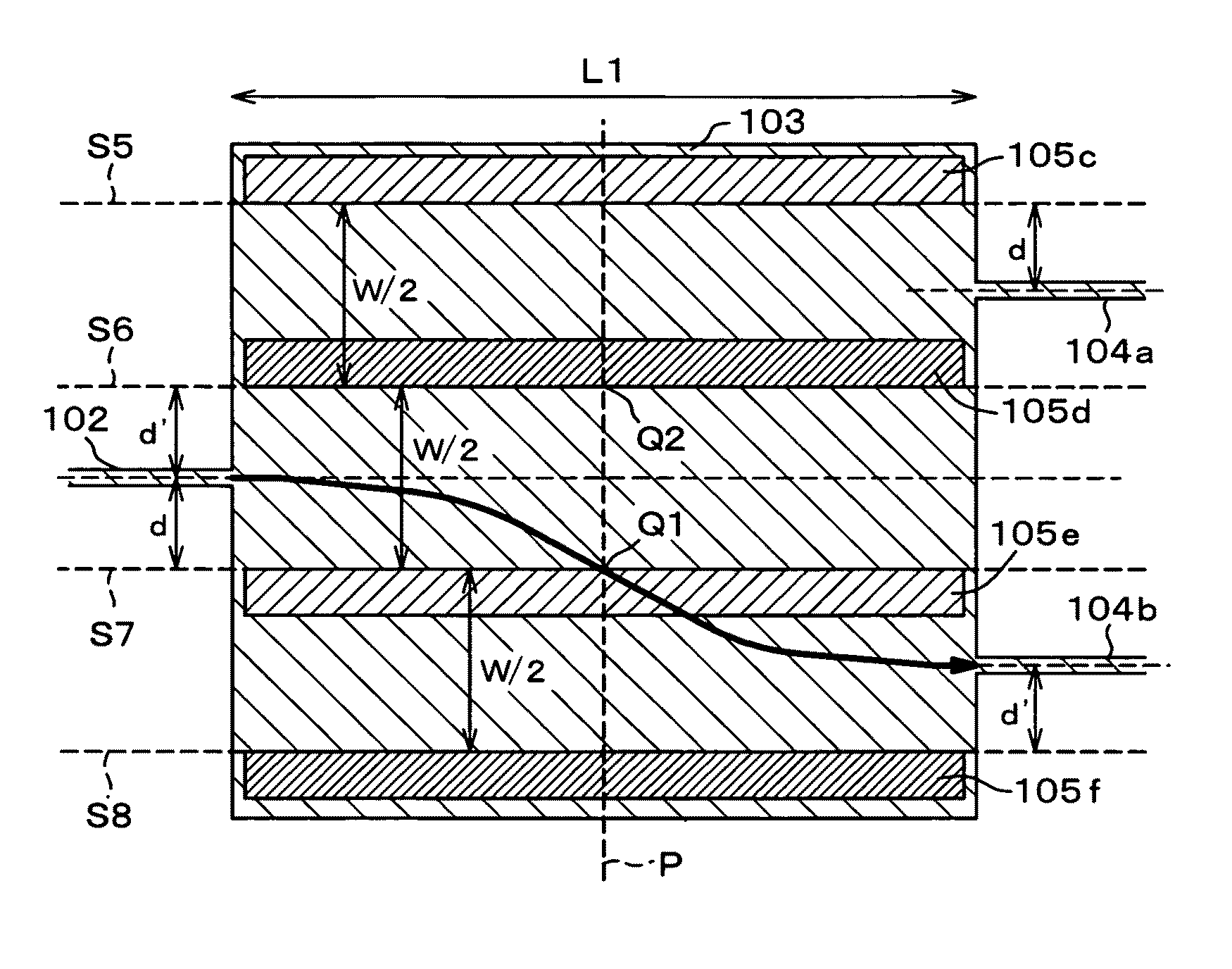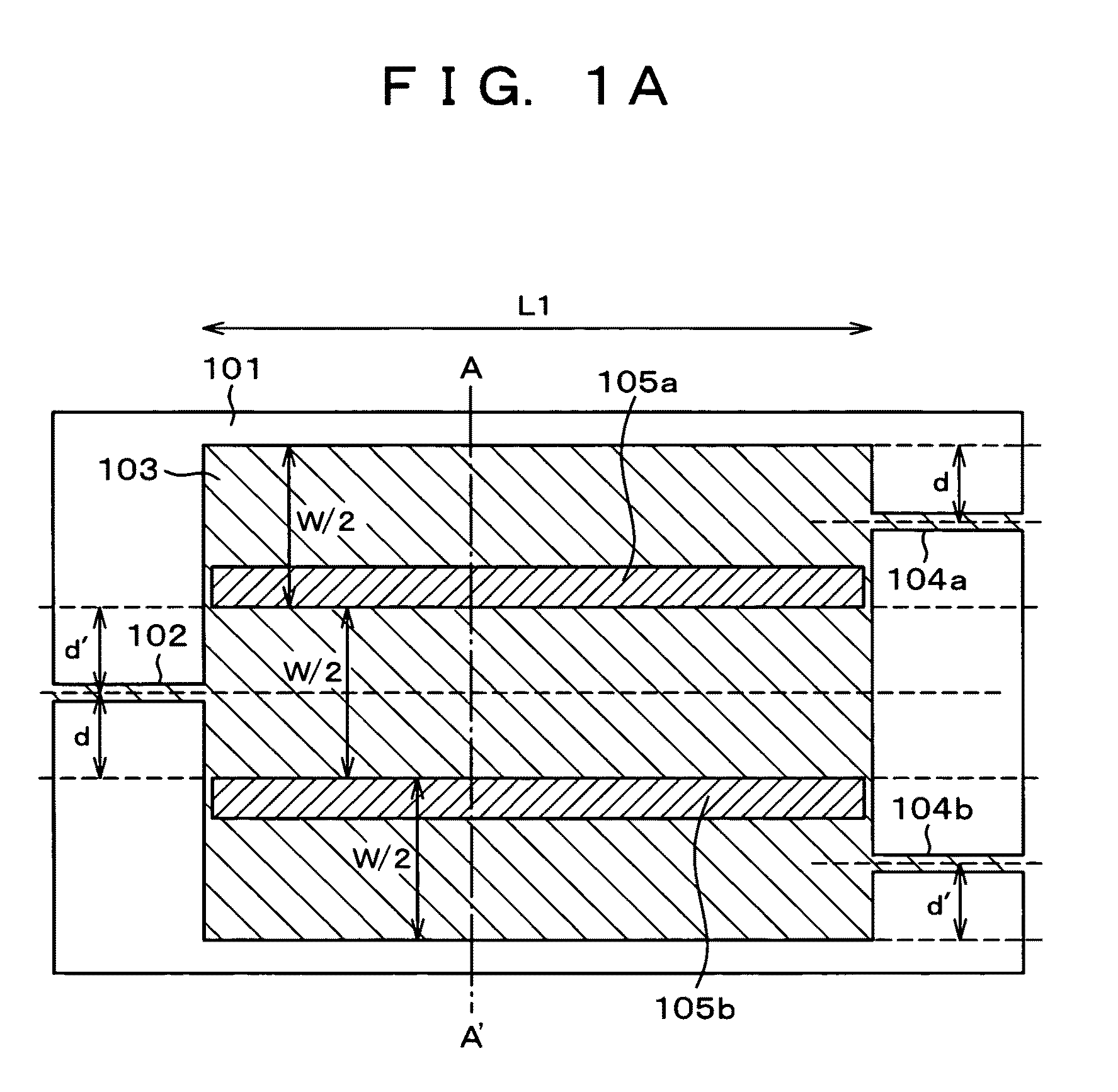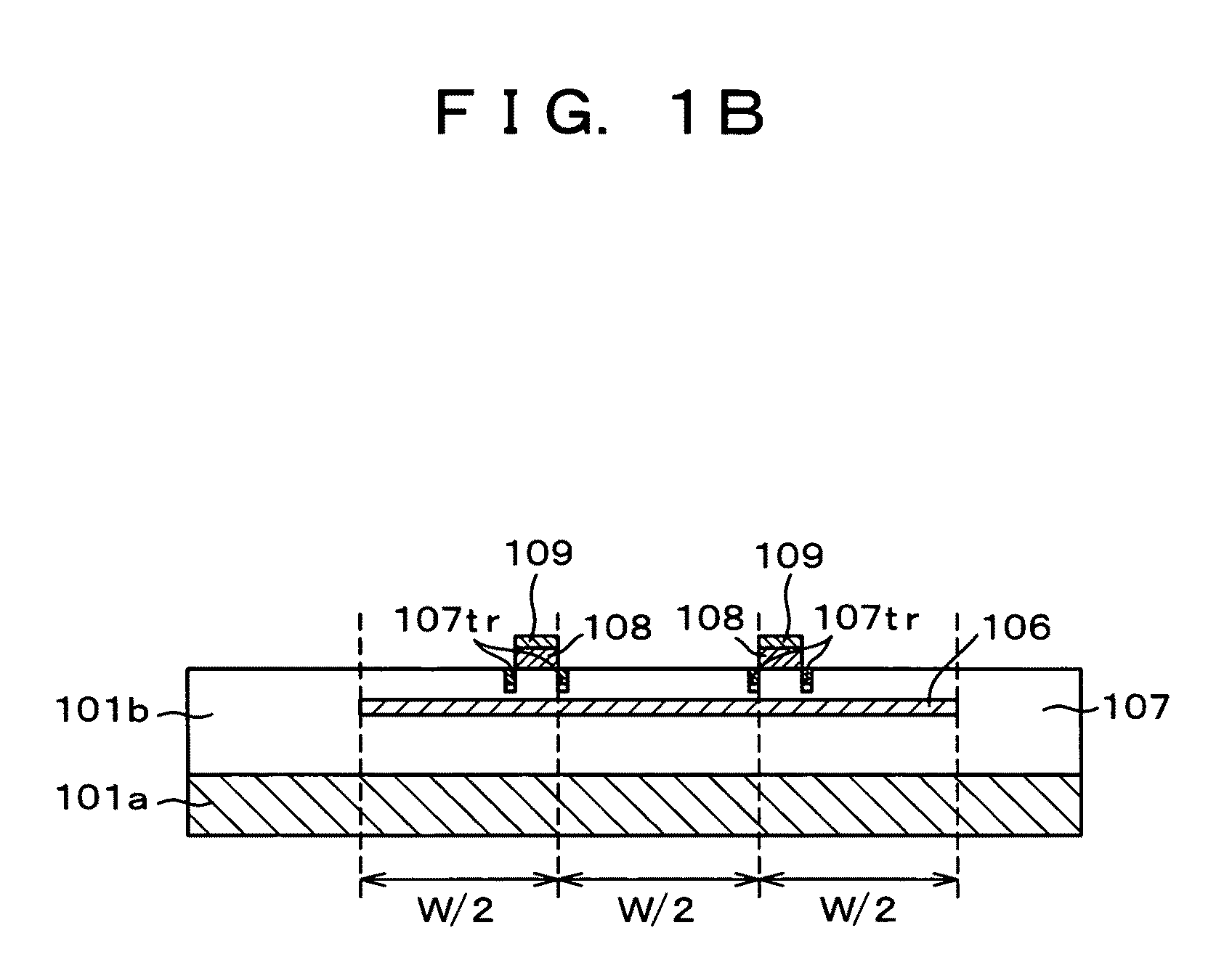Multimode interference waveguide type optical switch
a waveguide and optical switch technology, applied in the field of multimode interference waveguide optical switch, can solve the problems of increasing the electric power needed, increasing the switching time, and increasing the capacitan
- Summary
- Abstract
- Description
- Claims
- Application Information
AI Technical Summary
Benefits of technology
Problems solved by technology
Method used
Image
Examples
embodiment 1
[0151]A first embodiment is shown in FIG. 1A. In FIG. 1A, reference sign 101 designates an optical waveguide substrate, reference sign 102 designates an input waveguide (input single-mode waveguide), reference sign 103 designates a multimode interference waveguide, reference signs 104a and 104b designate output waveguides (output single-mode waveguides), and reference signs 105a and 105b designate electrodes. FIG. 1B shows a cross section along line A-A′ of FIG. 1A. In this embodiment, the structure of the waveguide is that of a PLZT waveguide. However, the material system is not limited to PLZT. In FIG. 1B, reference sign 101a designates a semiconductor niobium-doped strontium titanate substrate, reference sign 101b designates a waveguide layer which consists of a PLZT core 106 and a PLZT cladding 107, reference sign 108 designates an ITO (Indium Tin Oxide) electrode, and reference sign 109 designates a gold electrode. Reference sign 107tr designates a separation groove formed so t...
embodiment 2
[0156]A second embodiment is shown in FIG. 2A and FIG. 2B. This embodiment differs from the first embodiment in that the number of upper surface electrodes for controlling the refractive index is increased to have four electrodes (105c to 105f). In the first embodiment, the places that function as total reflection side surfaces are one side where a refractive index difference occurs by applying a voltage, whereas the other side is a part having a refractive index difference provided by a waveguide structure. These are not the same in structure, and are asymmetrical. However, in this second embodiment, both of the total reflection side surfaces are created by a refractive-index variation resulting from the application of a voltage, and have a completely symmetrical structure. When a voltage is applied to the electrodes 105d and 105f, the broken line S6 and the broken line S8 serve as a total reflection side surface of the multimode interference waveguide. Light entered from the input...
embodiment 3
[0157]A third embodiment is shown in FIG. 3A to FIG. 3C. This embodiment has a switch structure capable of simultaneous switching among a plurality of inputs. Although the switching mechanism is the same as in the second embodiment, the broken line S6 and the broken line S8 serve as a total reflection side surface of the multimode interference waveguide when a voltage is applied to the electrodes 105d and 105f. Light entered from the input waveguides 110a and 110b is imaged at a position symmetrical with respect to an intersection Q1 of the broken line S7 and the broken line P by which a rectangular waveguide is halved, i.e., at the position of the output waveguides 111b and 111a, and is output. Additionally, the broken line S5 and the broken line S7 serve as a total reflection side surface of the multimode interference waveguide when a voltage is applied to the electrodes 105c and 105e. Light entered from the input waveguides 110a and 110b is imaged at a position symmetrical with r...
PUM
 Login to View More
Login to View More Abstract
Description
Claims
Application Information
 Login to View More
Login to View More - R&D
- Intellectual Property
- Life Sciences
- Materials
- Tech Scout
- Unparalleled Data Quality
- Higher Quality Content
- 60% Fewer Hallucinations
Browse by: Latest US Patents, China's latest patents, Technical Efficacy Thesaurus, Application Domain, Technology Topic, Popular Technical Reports.
© 2025 PatSnap. All rights reserved.Legal|Privacy policy|Modern Slavery Act Transparency Statement|Sitemap|About US| Contact US: help@patsnap.com



